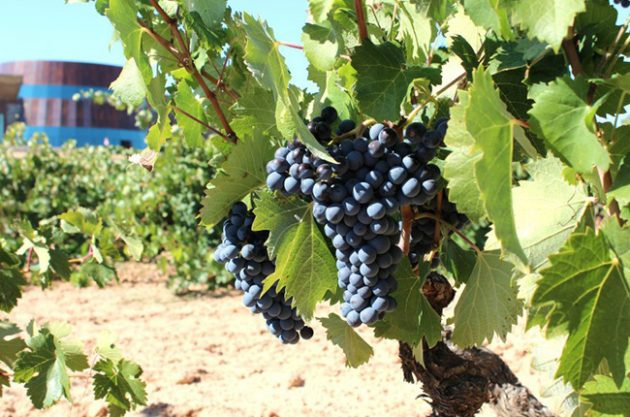In partnership with ARAEX Grands
What to look out for...In partnership with ARAEX Grands
Latest trends in Spanish fine wine
A few decades ago, Spain was an easy country for wine geeks to study. Two regions, Sherry and Rioja, whose wines had clearly defined taste profiles, one dominant red grape variety, Tempranillo, and a sea of cheap stuff.
There were some emerging regions, built upon Tempranillo, eventually Garnacha, but Spain’s future used to depend on the adoption of modern viticulture and French varieties. Nowadays, Spain is much more complicated.

Tempranillo grapes in Dominio de Cair. Credit: Araex
Traditional styles are reinventing
First, there is not a clear definition of Rioja or Sherry.
Both are in a process of diversification and re-creation, resulting in dozens of different styles, often with amazing quality.
Then, the emerging red wine regions of the past, such as Toro, Ribera del Duero or Priorat, are now classic wine countries, and a high number of new fine wine regions appeared: Bierzo, Alicante, Utiel-Requena, Penedès, Gredos, Jumilla, Aragón, Canary and Balearic Islands, Arribes, Galicia, Empordà.
Our judges praised Galacia and surrounding areas in the Spanish Atlantic reds panel tasting, last year.
‘The aggregated effect of scientific developments in viticulture and oenology, climate change, a resurgence of the perceived value of indigenous varieties and a market eager to reward niche identities resulted in a new area for fine red wines.’

Vines at Valtravieso, in Ribera del Duero. Credit: Araex
Exploring more grape varieties
Most of those new regions are building their prestige upon anything but Tempranillo: Mencía, Garnacha, Bobal, Callet, Cariñena, Monastrell, Listán, Prieto Picudo.
French varieties are still there, sometimes rendering great wines, but the trend is for the autochthonous stuff.
This revolution is even more impressive with white wines. 30 years ago, there was little hope for them.
Now, the range and quality of Spanish white wines is impressive: Albariño, Godello and many other varieties in Galicia, Verdejo in Rueda, Xarel.lo in Catalonia, Garnacha Blanca, Viura, Malvasía, Gual, Moscatel, Merseguera – to name some.
For example, according to Wines of Rioja, white Rioja increased its market share of all Rioja wines in 2017 to 6.4%, compared to 4.8% the previous year – an increase of 53.8%.
Total sales of white wines from Rueda have more than doubled since 2010, according to the DO Rueda trade body.
White wine shares within the whole Spanish category hold almost a quarter of the market share, to 23.4% says Wines of Rioja.

Grapes from Luis Canas. Credit: Araex
Focusing on their origins
Concerning styles and winemaking, two major features set the fine wine trends.
First, increasing self-confidence. Thanks to this, producers do not aim to create wines that look like others’, but concentrate on styles that are truer to their origins. They do not bother to mask their wines under excessive oak or over-maturity.
They are concerned about balance and freshness. Elegance, the most elusive objective in wine making, is now the mantra for quality.
Organic and biodynamic vineyards
Secondly, vineyards are deemed now the most important quality factor. Because of that, vineyard designation processes are now the hot topic in Spain, and the country has become the world’s leader in terms of organic and biodynamic vineyards.
Spain accounts for 27% of the world’s organic wines, according to from Spanish Organic Wines, and the DO with the highest number of organic and biodynamic vineyards is Cava.
They also report that sales of organic and biodynamic Spanish wines are thriving in export markets.







